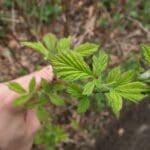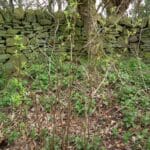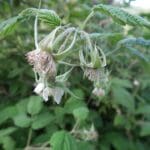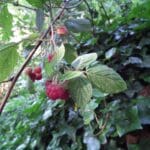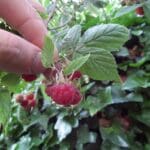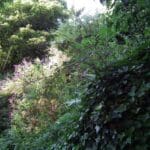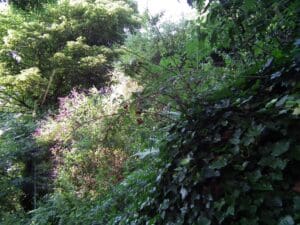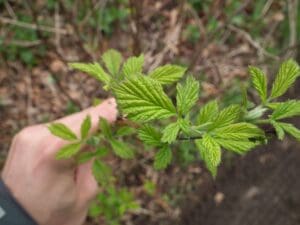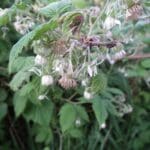Wild Raspberry / Summer / Autumn / Edible
Common Names
Raspberry, hindberry.
Botanical Name
Rubus Idaeus
Scientific Classification
Kingdom – Plantae
Order –Rosales
Family – Rosaceae
Physical Characteristics for Wild Raspberry
Leaves
Raspberry has compound leaves which have 5-7 serrated leaflets. They are bright silver on the underside.
Flowers
The flowers are very short lived perhaps lasting only a day, but they are white and have 5 petals and appear between June and August.
Fruit
The fruit are red and made up of a cluster of juicy bobble, each one containing a small seed. When ripe they pull easily away from the core, whereas with Blackberries and most other members of the family the core remains attached to the fruit.
Stems
In their first year the stems or canes have just leaves, but in the second year this stem produces leaves and flowers. The canes have small reddish thorns which are soft, not as vicious as Brambles.
Habitat
Common, native to the UK and Europe.
Mixed woodland, roadsides and footpaths.
Known Hazards
Older leaves can contain small amounts of cyanide.
Could be Confused with
Once the fruit is ripe it is hard to confuse it with anything else. Other than an unripe Blackberry (Rubus fruticosus) perhaps.
Edible Uses
The berries are one of my favourite wild foods and most of them don’t make it back to the kitchen. But if they do make it home they can be stewed, made into jam etc.
Notes on Herbal uses
They contain powerful antioxidants and are an excellent source of vitamin C, manganese and fibre. Raspberries are anti-inflammatory, and as part of a healthy balanced diet can help boost the immune system, improve cardiovascular health, and reduce the risk of obesity. Like all berries, they contain anthocyanins which have been proven to prevent the brain damage and memory loss associated with aging. They’re also high in polyphenolic compounds which can help lower the risk of cancer. The leaves of the Raspberry plant are just as nutritious as the fruit, and are usually dried and consumed as a tea. Raspberry leaf tea is believed to have many health benefits, from reducing inflammation, to preventing nausea, but it is most commonly thought to ease childbirth. Although there’s little scientific evidence to substantiate this.
Extra notes from the Foragers
Raspberries are technically not a berry, a Raspberry is made up of many tiny bead-like fruits called “drupelets” clustered around a central core. Each drupelet contains one seed, and an average raspberry has 100 to 120 seeds.



